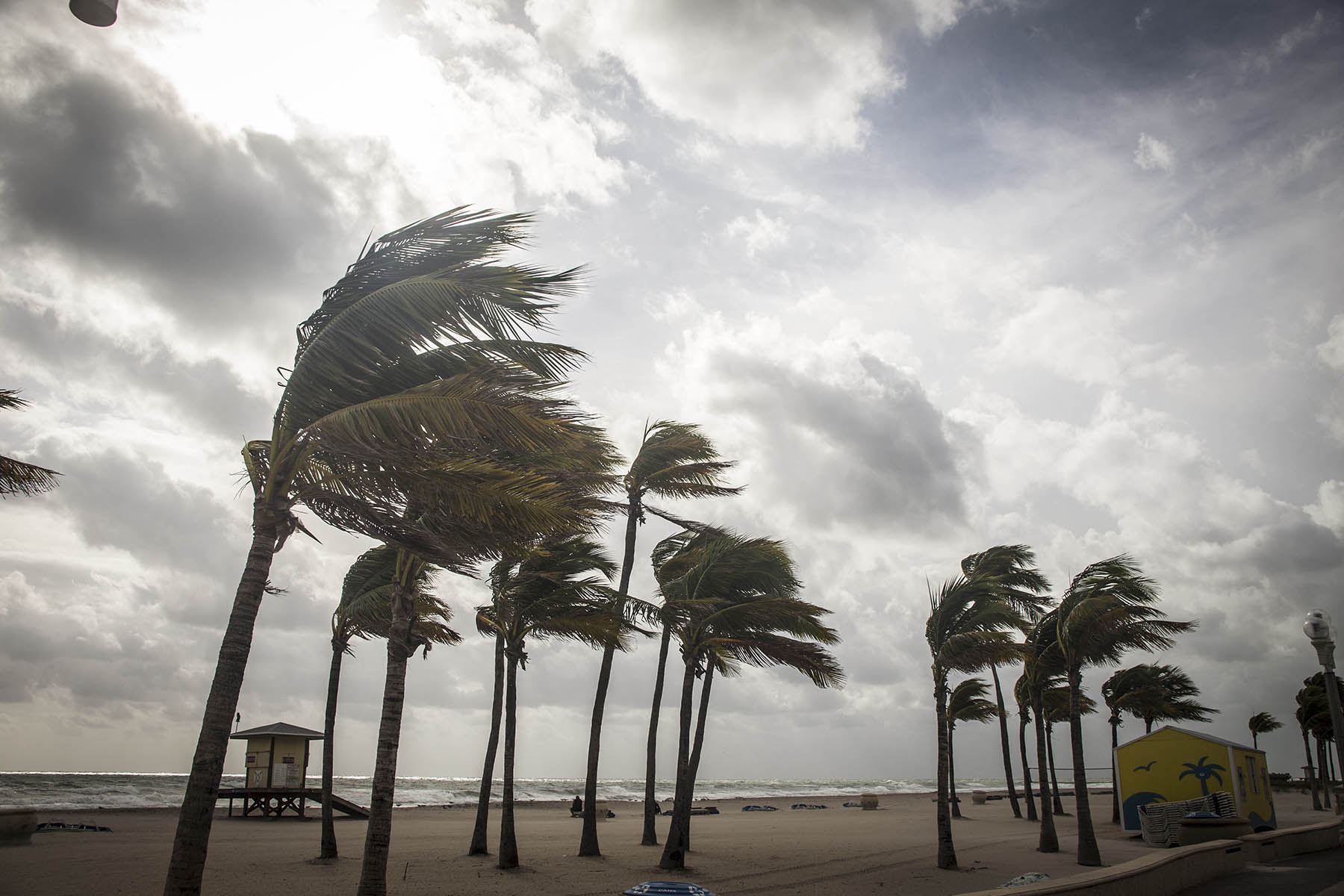
Engineers have played an essential role in preparing cities and states for the 2021 hurricane season. Their efforts to protect the public and public infrastructure range from sea walls to sewer systems, with an emphasis on sustainability.
In cities and states along the United States’ Atlantic Coast and into the adjoining Gulf of Mexico, engineers have worked with government agencies, property owners, and others to prepare their sites and facilities for the 2021 hurricane season, now underway. As stakeholders look ahead, they also often look back — to a major storm that struck their region in the past and taught them hard lessons about how to fight back against the winds and the waves as well as how to build a more sustainable future.
For the 2021 Atlantic hurricane season, the National Oceanic and Atmospheric Administration predicts “another above-normal” season, but not one with as much storm activity as 2020. NOAA’s Climate Prediction Center forecasts a 60% chance of an above-normal season, a 30% chance of a near-normal season, and a 10% chance of a below-normal season. NOAA also expects a likely range of 13 to 20 named storms during the 2021 season, which began June 1 and extends through Nov. 30. Six to 10 of those storms could become hurricanes, NOAA predicts, and three to five could become major hurricanes — those designated as category 3, 4, or 5.
Sandy’s legacy
In the New York City region, the legacy of flooded facilities and other devastation wreaked by 2012’s Hurricane Sandy, also sometimes called Superstorm Sandy, continues to drive many efforts to prepare for and protect against similar extreme weather events. At the Port Authority of New York and New Jersey — which maintains and operates five airports, multiple bridges and tunnels, the Port Authority Trans-Hudson rail system, and other transportation and seaport-related infrastructure for the two states — Sandy “kick-started efforts to mitigate our flood risk,” notes Josh DeFlorio, LEED AP, ENV SP, the chief of resilience and sustainability in the Port Authority’s engineering department.
Although the Port Authority already had a “relatively robust flood program” before Sandy, those efforts “became much more focused and embodied much higher standards after Sandy,” DeFlorio explains.
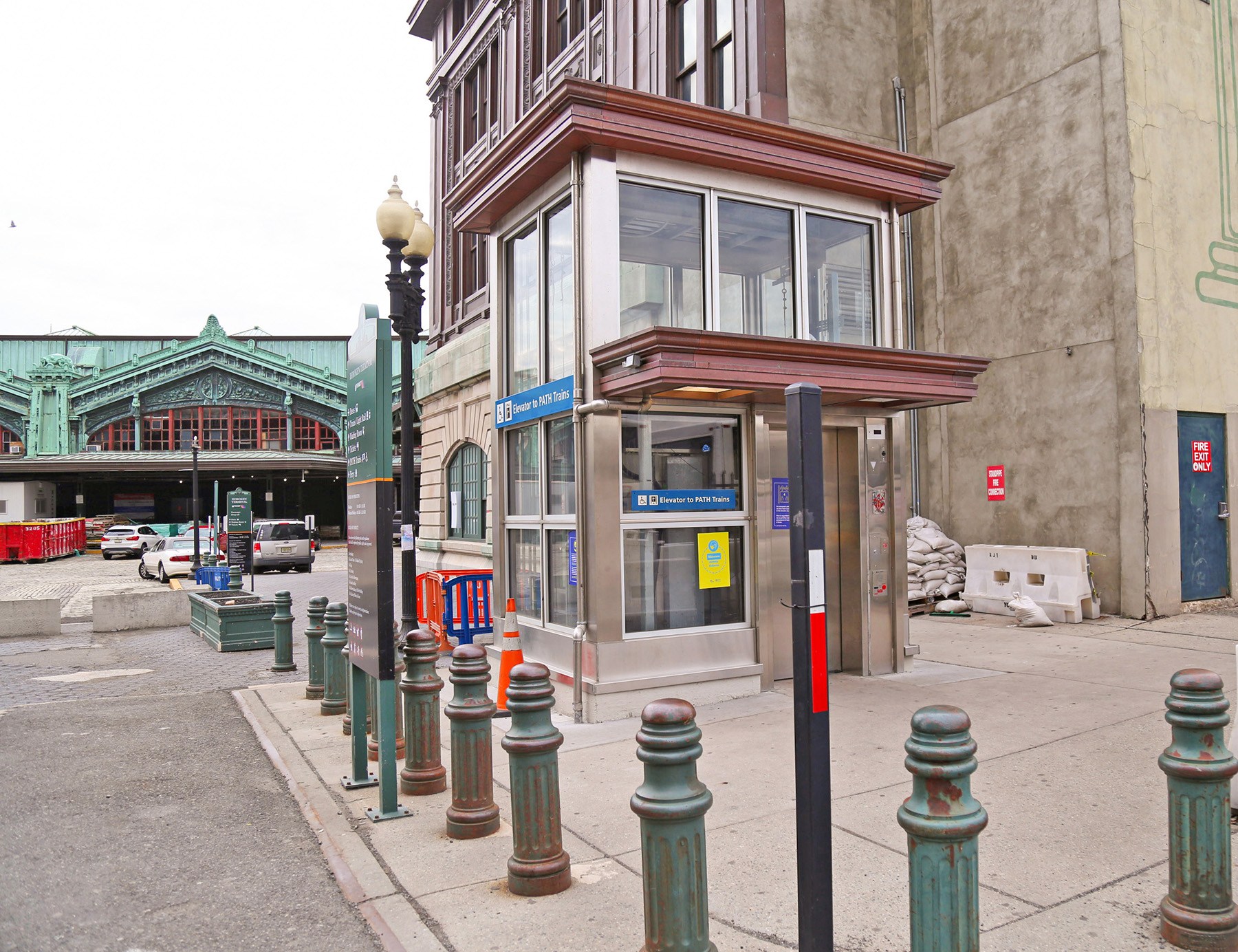
Within a few years of Sandy’s landfall, the Port Authority introduced the first iteration of its Climate Resilience Design Guidelines, which focused mostly on coastal flood risk “because that is the most pressing hazard we face, both in terms of frequency of occurrence and magnitude of impacts,” DeFlorio says. But the guidelines also “gave us a formula, a system for applying flood mitigation criteria that takes into account not just current threats but potential threats related to sea level rise and storm surge.”
The PATH rail system was one of the Port Authority’s hardest-hit assets when Sandy struck, experiencing more than $1 billion worth of damage and significant disruption of service, DeFlorio notes. In response, the Port Authority has worked to protect the station head houses, several of which are located adjacent to the Hudson River and were a major source of floodwater infiltration into the rail tunnels during Sandy.
These efforts include the installation of high-grade, aquarium-style glass, 3 in. to 4 in. thick, around station elevators. Stoplog systems — temporary flood barriers comprising stacked aluminum segments, waterproofed with gaskets — were also erected at the tops of staircases. In addition, flexible fabric barriers can now be pulled across portals, and massive steel doors, some weighing as much as 5,600 lb, can be shut and sealed against the water that would otherwise flood a tunnel, DeFlorio notes.
Because Sandy also damaged or destroyed PATH rolling stock, the Port Authority is installing new flood protections at its primary rail storage yard, the Harrison Car Maintenance Facility in New Jersey, including a new concrete sea wall and deployable swinging floodgates. The Port Authority is also increasing the capacity of some smaller rail yards that are located at higher elevations than the Harrison facility so it can safely store rolling stock during a storm event, DeFlorio says.
At LaGuardia Airport, sections of which were flooded for several days by Sandy, the Port Authority augmented the capacity of the existing pump system used to dewater the airfield, which is located within a protective berm. The Port Authority also raised the elevation of the pump control systems and the electrical distribution infrastructure that powers the pumps. During Sandy, DeFlorio notes, some pumps lost power because the electrical and control systems were damaged by flooding, which meant the pumps “couldn’t do their job during the storm or immediately after.”
Transit’s trials
In the aftermath of Sandy, “everything we build now has a flood-resiliency component to it,” says Lindsay Maguire, P.E., ENV SP, a vice president and the New York director of operations of Naik Consulting Group, a minority business enterprise engineering and construction management firm, headquartered in Edison, New Jersey. While she was with Naik and other firms before that, Maguire worked on various projects at other rail yards in the region, including the Metropolitan Transit Authority’s New York City Transit 207th Street Railyard, which is under the jurisdiction of the MTA. The MTA also operates the New York City subway system, the Long Island Rail Road, and other transportation infrastructure networks.
Maguire was a civil engineer on a team that designed a perimeter flood wall to protect the 207th Street Yard and its portal to the NYC Transit tracks, which had flooded heavily during the 2012 storm. But the site was filled with subterranean utility lines, including a large interceptor sewer that cut across the entire yard, roughly 25 ft underground. Although the interceptor is being relocated outside the rail yard, that solution comes with additional challenges because of the presence of an elevated subway train and other underground utilities at the new site, she notes.
The design and construction of flood protection systems often involve an array of questions beyond the basics of how to keep floodwaters at bay. Often, a client will simply say, “We need this area protected,” explains Maguire. But that somewhat general goal requires the design team to explore multiple specific issues, such as what exactly needs to be protected: a generator, for example, or an entire train? An entire building or just one portion of the structure? How long can the protected site or equipment be out of operation? A day or more? A week? Or does it need to stay in operation throughout the storm?
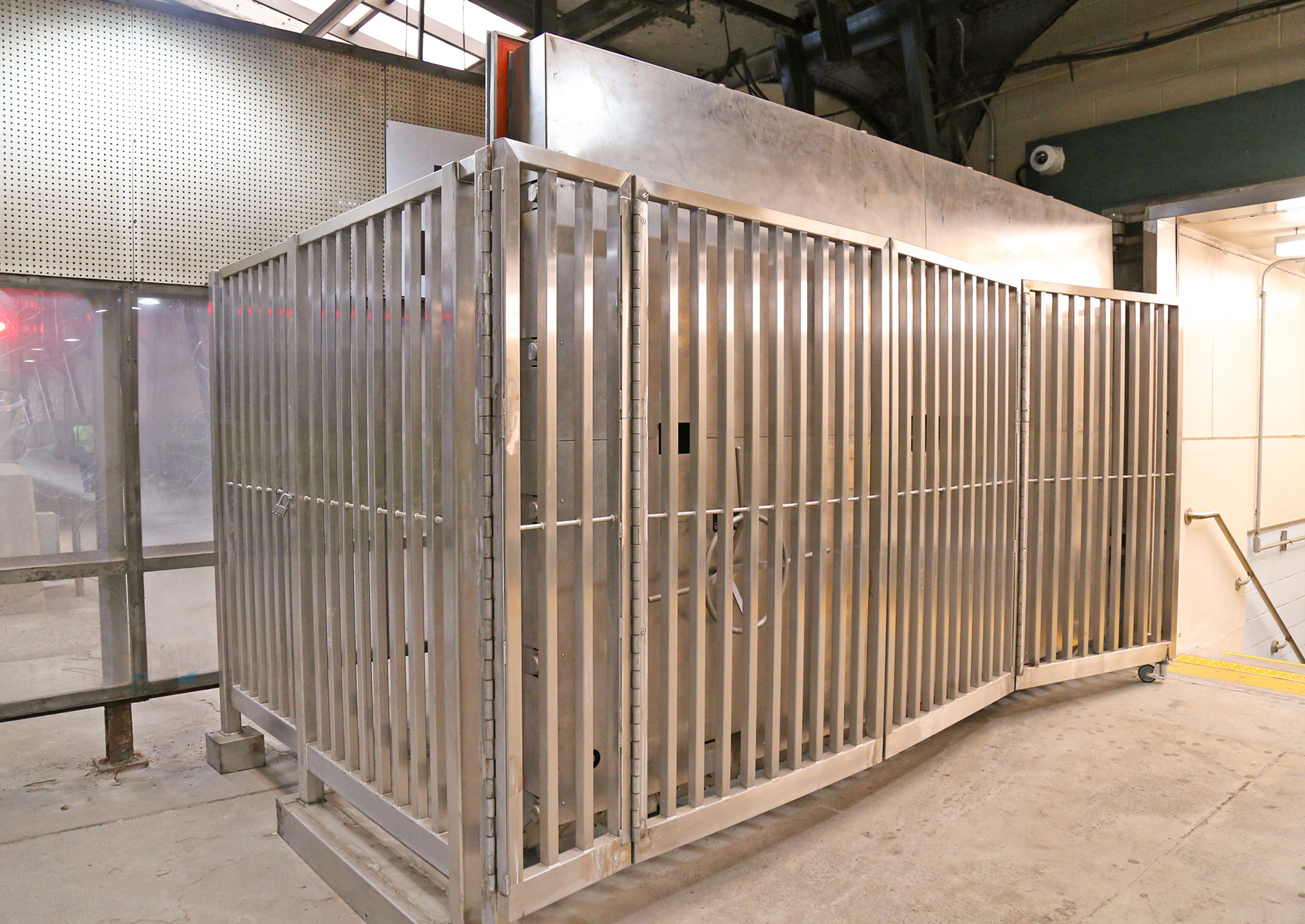
Likewise, Maguire says, the design team needs to understand where a deployable flood barrier — as opposed to something permanent, like a sea wall — can be stored. Is there space at the site? Nearby? Or someplace farther away that requires transportation to get the barrier to the site before the storm hits? Designers need to ask such questions even about something as simple as sandbags, Maguire stresses. “If you need a lot of them, where will you store them until needed?” she asks. “How long can they stay in storage before they need to be replaced?”
Other questions include: How many employees will be at the site before or during the storm to help deploy the barrier? How long will it take to install the barrier, and how well trained are the employees who will be available to do the work? How often have they practiced deploying the barrier? And are the same employees who were trained on the system still available, or have new, untrained employees been rotated in?
Testing the waters
Some systems can be installed or secured relatively quickly. Others — such as a large rubber tube that, somewhat ironically, is filled with water to create a watertight seal — require as much as two days of advance notice to get ready and put in place, involving considerable heavy lifting and other physical effort, Maguire says.
A property owner must also be encouraged to consider how well the barrier has been maintained over its life in storage. If there is something like a flood wall in the ground that needs to be raised, has the system been tested at all to be certain it will function when needed? In a somewhat unique example of testing a flood protection system, the MTA blocked off and flooded the entrance to one of its own subway stations in Brooklyn to see how well a new floodgate would work. The system apparently worked so well that “the entire station appeared to be submerged, with water filling the staircase leading outside,” explained a November 21, 2019, news report from NBCNewYork.com.
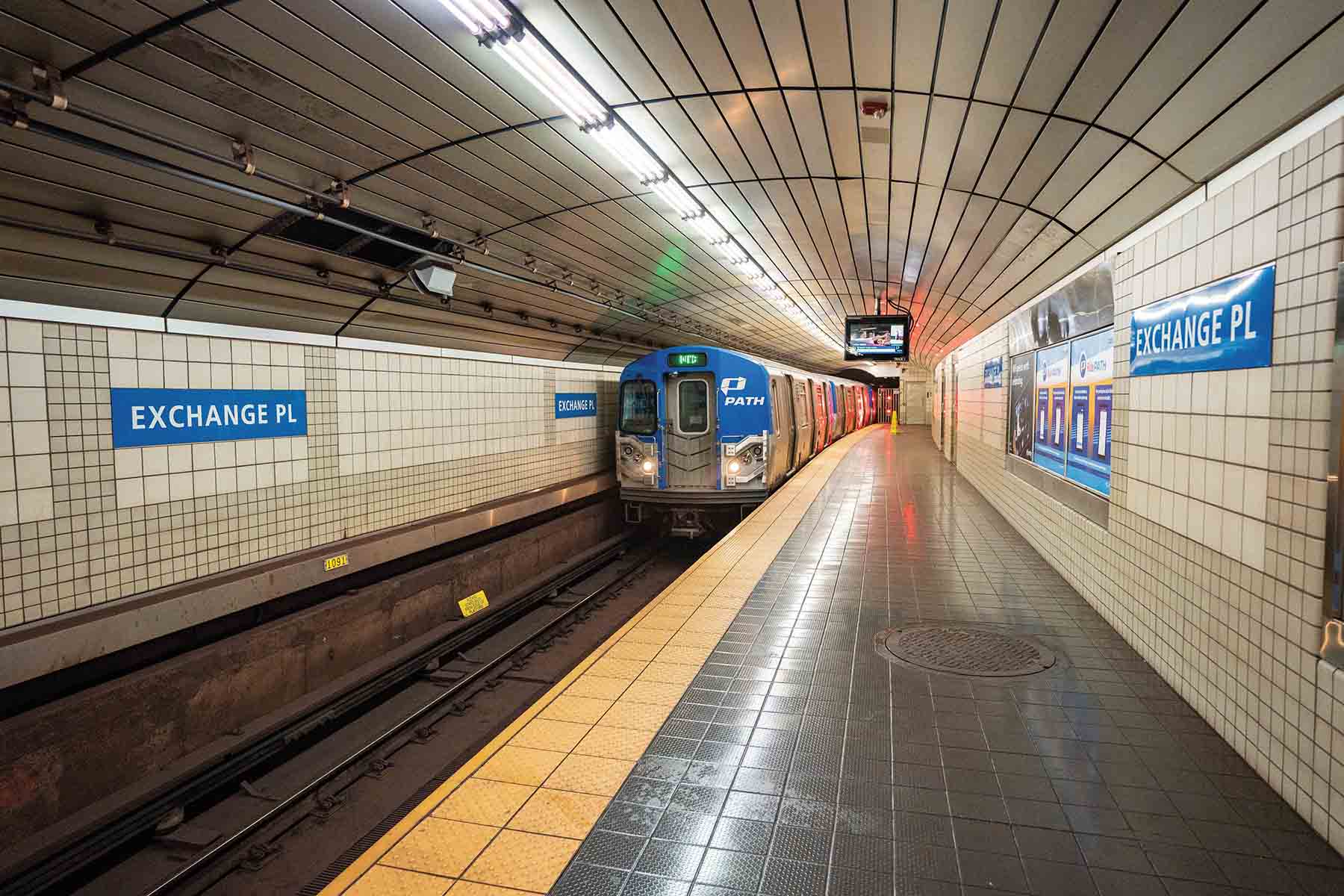
A site’s operations and maintenance personnel should be included in all discussions about flood protection systems, Maguire notes. She recalls one project on which the designers and the client’s executive staff suggested using a series of stacked, metal stoplogs to close off a portal. But it was only when people began to examine the actual site and take measurements of the portal that the client’s team got involved, asking questions about where the stoplogs would be stored and who would actually install the 12 stoplogs, each of which weighed several hundred pounds.
“It was a learning curve for everybody,” Maguire recalls. Flood mitigation projects can require extensive communications and interactions with various city departments or regulatory agencies to obtain the necessary permits and approvals for the work being planned — such as the installation of new pumps that will drain water outside the site being protected, adds March Chadwick, AIA, LEED AP, the president of New York City-based M.Arch Architects.
Depending on the client, a project — especially one involving critical infrastructure — might face security concerns that limit how the design team conducts its work, Chadwick says. For example, his firm has faced restrictions on what it could do with the existing drawings of a site being examined for a flood protection system. They were also discouraged from creating building information modeling drawings because the client was concerned that data captured in the BIM might end up “someplace they couldn’t control or manage,” he explains.
Sewer safety
On Florida’s Atlantic Coast, multiple hurricanes over the past century have caused billions of dollars in damages and killed thousands. In Miami-Dade County, the state’s most populous county, the water and sewer department has designed its critical infrastructure to exceed what the standard building codes require in terms of wind bursts and flooding, says Annalise Mannix, P.E., PMP, ENV SP, the department’s division chief for planning and development. “What we’ve been doing,” Mannix explains, “is developing a basic risk model for all of our pump stations and our sewer facilities. We identified all the most critical infrastructure based on risk.”
Then, as the county replaces equipment at its various sites, it works to relocate or upgrade the equipment on the basis of how critical that facility might be. For example, a pump station that services a hospital or an elementary school that might be used for evacuation purposes during a storm would be considered more critical than other sites.
The county is also considering how sea level rise will affect overall operations. Vital equipment is being elevated, and the department has developed the capability of shifting the direction of wastewater flow between the region’s three treatment plants to accommodate potentially large rain events at one end of the county or the other, she explains.
Similar risk models are being considered for the drinking water system, Mannix adds.
Miami-Dade County also plans to move various older pumping stations that are located beneath the region’s highways. Such locations were not as much of a challenge 30 or 40 years ago when there were only 2,000-3,000 vehicles a day on those roads, Mannix says. But today there can be more than three times as much traffic. That makes it difficult and dangerous to repair such facilities after a major storm — especially when local police are often busy with so much else that they cannot “help us control traffic while we work on a pump station in the middle of the road,” Mannix explains.
Rising groundwater in the region and an increasing number of high-tide events related to sea level rise have put thousands of commercial properties that use septic tanks at risk of being compromised or failing. And that could lead to serious environmental impacts and public health risks. As a result, Miami-Dade County is trying to connect as many commercial properties as possible to the county’s sewer system, Mannix says. A similar septic-to-sewer effort is planned for residential property owners.
Hidden measures
Storm hardening is a key part of the work performed by engineers at WGI, in West Palm Beach, Florida. Such efforts begin with a careful assessment of the facility to be protected, explains Jeff Bergmann, P.E., M.ASCE, WGI’s director of specialty structures. “We look inside buildings, at roofs, at mechanical units, and anything on the ground or mounted to the ground,” says Bergmann.
Problems can be discovered in everything from the trees surrounding a building — which can become projectiles in heavy winds — to mechanical units that are not tied down at all but simply set on the ground. Rooftop systems attached with just a few screws are additional hazards; they are unlikely to hold the equipment in place during 140 mph winds, Bergmann warns.
“We walk through a building looking for vulnerabilities,” Bergmann notes. Sometimes, especially in older buildings, the structure might look fine, but the engineers discover the roof diaphragm is not attached to the walls. “Or there’s a discontinuity to the load path, or you find other things that may have been done 30 or 40 years ago” that do not meet the requirements of today’s building codes, Bergmann explains.
There are also oversights that weren’t known to be problems at the time of construction. Bergmann recalls one wastewater facility that he and a colleague examined in which the building’s security system featured magnetic locks on the doors and motion sensors that unlocked those doors when someone inside the structure was ready to exit. But there was nothing to stop the system from unlocking doors during a hurricane if anyone approached the motion sensors, “creating an automatic breach during a storm event,” Bergmann says. As a result of that discovery, the utility added a new protocol that turned off the magnetic locks during storms to keep its doors secure, he adds.
Galveston endures
In Texas, the U.S. Army Corps of Engineers is constructing a project known as the Sabine Pass to Galveston Bay Coastal Storm Risk Management program. Also known as S2G, the program is part of the Corps’ Texas Coastal Resiliency Master Plan, which is a regional approach to address potential flooding and storm surge as well as the erosion of shorelines and degradation of coastal wetlands, explains Teresa King, the Corps’ S2G program manager.
Within the overall S2G project are separate efforts, including the Port Arthur and Vicinity portion, which will involve raising approximately 5.5 mi of the existing 27.8 mi of earthen levees and replacing approximately 5.7 mi of flood wall. A separate 1,830 ft of new earthen levee will be constructed in the Port Neches area.
A joint venture of Freese and Nichols Inc., COWI North America Inc., and CDM Smith Inc. is providing design services to the Corps for the Port Arthur and Vicinity project, which includes the region’s petroleum refineries and deep-water port. Given recent historic storms in the region as well as the barge traffic in and out of the port, the engineers are especially focused on designing structures to withstand barge impact loads, says Michael Oleson, P.E., PMP, M.ASCE, a CDM Smith associate.
“Another challenge faced during the project was the fact that it began in the midst of the COVID-19 pandemic,” Oleson says, which “created challenges related to remote collaboration and data sharing. Opportunities for one-on-one discussions (and) major milestone review meetings were limited.”
Under such circumstances, “a successful team maintains continuous and constant communication with all of the key stakeholders,” Oleson explains. “The team must also document and track in the project-risk register all of the potential project risks with respect to cost, schedule, technical, etc., so that the risks can be monitored and evaluated.”
Designing hurricane protection systems is a dynamic process that can be as unpredictable as the climatic conditions that drive such work in the first place. And what seems to be the right solution for a problem today might not continue to work as well going forward.
When dealing with higher tides, for instance, the solution might involve raising a sea wall another foot or more, says Bergmann. But when that sea wall features a public walkway, for instance, and 10 years from now sea level rise has led to a need to raise that sea wall even higher, “all of the slopes you had originally calculated suddenly have to be raised,” Bergmann says. And that might lead the wall to exceed the maximum slopes allowed under the Americans with Disabilities Act.
“So you always have to keep in mind what might happen in the future,” Bergmann concludes.
SIDEBAR
Clients’ perspectives on hurricane preparedness
Engineers, of course, are quite used to providing consulting services to property owners and other clients. But the communications inherent to such services generally work best when the conversation goes in both directions. So here’s a sample of what some clients would like those engineers to understand.
Josh DeFlorio, LEED AP, ENV SP, the chief of resilience and sustainability in the engineering department of the Port Authority of New York and New Jersey, stresses that “we consider ourselves a best-in-class organization, and so (just designing to) code is not sufficient. Our standards go well above and beyond (code),” DeFlorio explains.
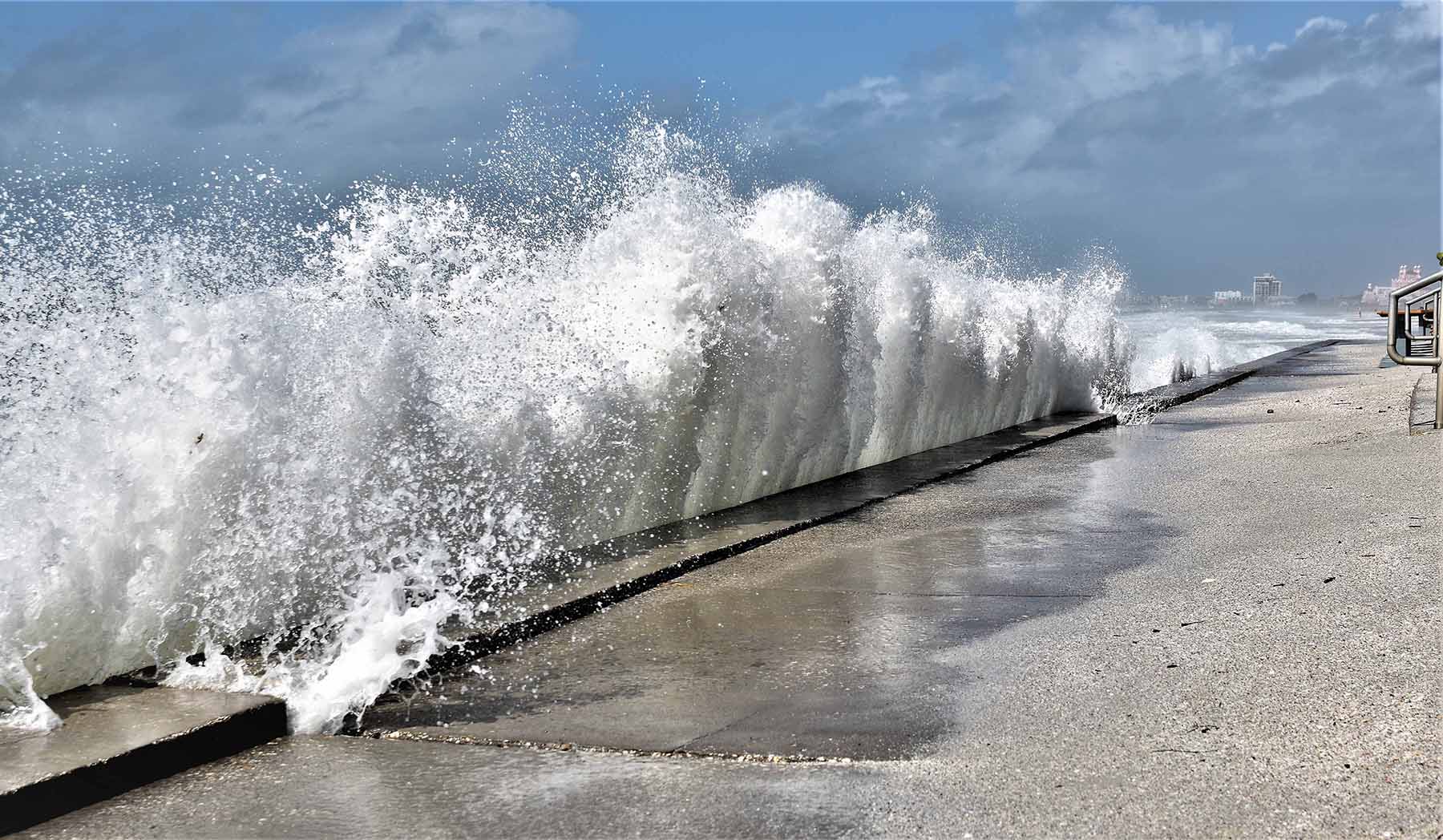
For example, on one project to storm-harden a Port Authority Trans-Hudson railway station head house, the building code only required the design to consider hydrostatic and hydrodynamic forces plus debris loading. Thus, a strict adherence to code would not have addressed the pressure of breaking waves.
But the Port Authority expects the zone of significant wave action — dubbed a V-Zone by the Federal Emergency Management Agency — to migrate inland because of sea level rise over the next 50 years or so, DeFlorio says. “So we worked with our design partners to look at not just what the expected flood zone is today but what we’ll expect the flood zone to look like during the expected service life of the site, which we hope will last until 2080 or well beyond.”
Potential engineering consultants for the Port Authority need to understand what its requirements are by reading the organization’s design guidelines — on topics ranging from structural and geotechnical issues to climate resilience and sustainability — which are available through the various links on the “Engineering Available Documents” portion of its website.
The Port Authority maintains a “call-in” list of what are essentially prequalified vendors, “so getting on that list is a key thing for anyone who wants to do a lot of business with the engineering department,” he notes. One of the first steps toward getting on the list is to fill out the Port Authority’s Professional Service Firm Questionnaire, available on the “Vendor Resources” portion of the website. Then be sure to keep your contact information up to date, DeFlorio says, since the Port Authority likes to maintain contact with its call-in firms “on an ongoing basis, whether or not you’re working on an active project.”
In addition, the Port Authority is “laser-focused on enhancing the diversity of our professional service firms,” DeFlorio notes. The official language specifies that contractors “shall use good faith efforts to achieve participation equivalent to” 20% of the total contract price for Port Authority-certified minority-owned enterprises and 10% for Port Authority-certified woman-owned enterprises. Another 3% is aimed at service-disabled veteran owners, DeFlorio adds. The Port Authority has also hired a chief of diversity and inclusion, with whom the engineering department works closely to “ensure we are meeting our D&I targets, not just for procurement but also for conducting active outreach to small businesses,” DeFlorio says.
Similarly, the U.S. Army Corps of Engineers stresses that consulting engineers should be familiar with the Corps’ processes as detailed within numerous publicly available documents, including engineering regulations, manuals, circulars, technical letters, and other information that can be found through the Corps’ website.
Potential consulting engineers can learn valuable lessons about working with the Corps through project-specific documents, such as the Interagency Performance Evaluation Taskforce report completed after 2005’s Hurricane Katrina, available from multiple sources, including, the Homeland Security Digital Library.
Engineering consultants also need to be aware of considerations unique to particular locations, such as the fact that in North Carolina most roads are owned by the state or specific localities; there are no county-owned roads in the state, notes Joe Stanton, the assistant director for recovery at North Carolina Emergency Management, part of the state’s Department of Public Safety.
Likewise, it can be important to understand the details of potential funding sources. For example, FEMA has a disaster relief program that primarily helps individual homeowners — but the program also sets aside 5% for so-called initiative projects that can be spent on public infrastructure work, from acquiring generators to developing early warning systems or education programs. These are efforts that can be hard to quantify in applications by a state for emergency-response funding, notes Steve McGugan, North Carolina’s state hazard mitigation officer.
Like others, Annalise Mannix, P.E., PMP, ENV SP, the division chief for planning and development at Florida’s Miami-Dade County water and sewer department, stresses that her department’s goal is not to just meet whatever the building code sets as the minimum standard but to exceed that mark. “We know the sea wall ordinance says you have to build the wall to 5 ft,” Mannix explains. “But that doesn’t mean ‘only’ 5 ft. It doesn’t say we can’t build it higher, to 8 ft.”
When her department seeks out consulting engineers, Mannix says, she looks for “clear specifics on their projects in which they performed flood-related hydrologic and hydraulic studies for utility, commercial, and residential developments.” The information provided should include their “interaction and coordination with clients, field visits, investigation of existing and proposed conditions, computer simulations, analyses, designs, preparation of exhibits and reports, and the evaluation of alternative solutions to hydrologic and hydraulic problems in conformance with the U.S. Army Corps of Engineers, FEMA, and governmental codes and regulations.”
Too frequently, though, “we have to spend a tremendous amount of time educating the consultants on the details of our needs, the fine details of the scope of the work that is required,” Mannix says.
Many of these firms “have a tendency to look at the big picture,” she explains, “but when you get down to the fine details of implementing a design, I find that the project-level staff probably need a bit more education on the flood plain laws, the National Flood Insurance Program, the federal guidelines on critical facilities, the significant details on what are FEMA mandatory requirements,” and similar key topics.
Mannix has also encountered situations in which consultants tout the experience levels of their engineers in the areas she most requires, but then “the actual members of the firm who are assigned to the project might not meet that same level of experience,” she says. “It’s the engineering interns who actually go out in the field — or the (engineers in training) or people with only a few years of experience,” she explains.
Depending on the project’s deadlines and urgency, Mannix adds, her department might try to work with the less experienced engineers. But other times, she has “gone back to the consulting firm’s leadership to say: ‘Look, I think we need to have a little bit more focus, bring in some people who have a little more depth of knowledge.’”
Mannix stresses the need for consulting engineers to be familiar with the relevant standards, such as ASCE 24, Flood Resistant Design and Construction, and ASCE 7, Minimum Design Loads and Associated Criteria for Buildings and Other Structures, along with the Environmental Protection Agency’s utility standards, FEMA’s building science publications and guidelines related to flood risks, and similar documents.
Again, though, Mannix hopes the engineers her department works with can exceed the minimums set in such codes and standards. For example, while some clients might want to save money by just following what FEMA sets as the base flood elevation for a specific location, Mannix says an experienced engineer “has a duty to note” that sea level rise is increasing a certain number of inches or feet per decade and a duty to consider wind and flood events based on the best available science.
“It’s very important for engineering firms to advise what’s in the best interest of the county,” she says, “regardless of whether it meets the budget or not.”
Engineers should be “designing an asset not just to withstand the conditions you expect it to face today or the conditions it has faced historically — you want the assets you deliver today to endure; you want them to achieve or exceed their design life span,” adds DeFlorio. Otherwise, “it’s a poor use of public money.”
Robert L. Reid is the senior editor and features manager of Civil Engineering.
This article first appeared in the July/August 2021 issue of Civil Engineering as “Preparing for Wind and Water.”




